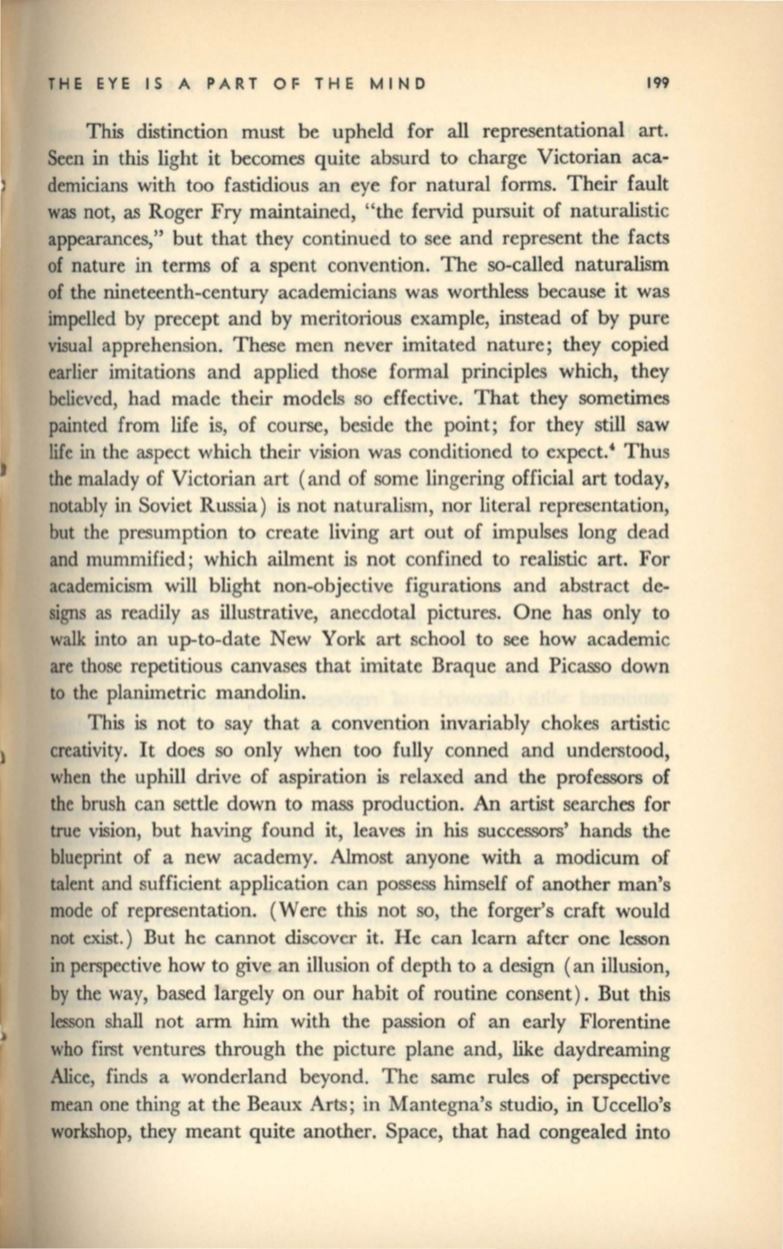
THE
EYE IS A PART OF THE MIND
199
This distinction must be upheld for
all
representational
art.
Seen in this light it becomes quite absurd to charge Victorian aca–
demicians with too fastidious an eye for natural forms. Their fault
was not, as Roger Fry maintained, "the fervid pursuit of naturalistic
appearances," but that they continued to see and represent the facts
of nature in terms of a spent convention. The so-called naturalism
of the nineteenth-century academicians was worthless because
it
was
impelled by precept and by meritorious example, instead of by pure
visual apprehension. These men never imitated nature; they copied
earlier imitations and applied those formal principles which, they
believed, had made their models so effective. That they sometimes
painted from life is, of course, beside the point; for they still saw
life
in
the aspect which their vision was conditioned to expect.
4
Thus
the malady of Victorian art (and of some lingering official art today,
notably in Soviet Russia) is not naturalism, nor literal representation,
but the presumption to create living art out of impulses long dead
and mummified; which ailment is not confined to realistic art. For
academicism will blight non-objective figurations and abstract de–
signs as readily as illustrative, anecdotal pictures. One has only to
walk into an up-to-date New York
art
school to see how academic
are those repetitious canvases that imitate Braque and Picasso down
to the planimetric mandolin.
This is not to say that a convention invariably chokes artistic
creativity. It does so only when too fully conned and understood,
when the uphill drive of aspiration is relaxed and the professors of
the brush can settle down to mass production.
An
artist searches for
true vision, but having found it, leaves in his successors' hands the
blueprint of a new academy. Almost anyone with a modicum of
talent and sufficient application can possess himself of another man's
mode of representation. (Were this not so, the forger's craft would
not exist.) But he cannot discover it. He can learn after one lesson
in
perspective how to give an illusion of depth to a design (an illusion,
by the way, based largely on our habit of routine consent). But this
lesson shall not arm him with the passion of an early Florentine
who first ventures through the picture plane and, like daydreaming
Alice, finds a wonderland beyond. The same rules of perspective
mean one thing at the Beaux Arts; in Mantegna's studio, in Uccello's
workshop, they meant quite another. Space, that had congealed into


